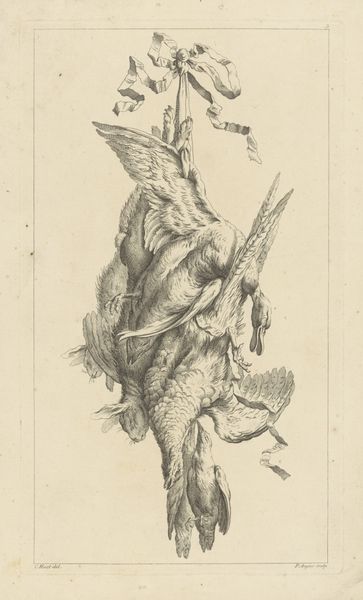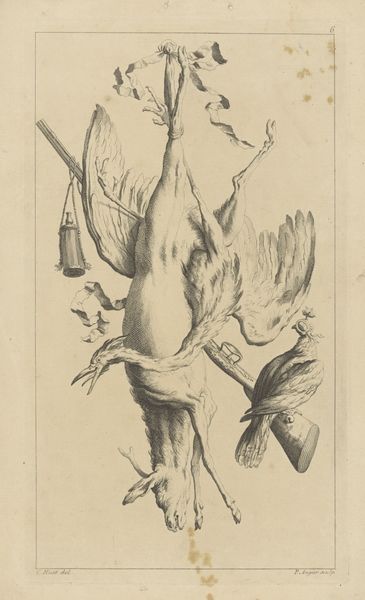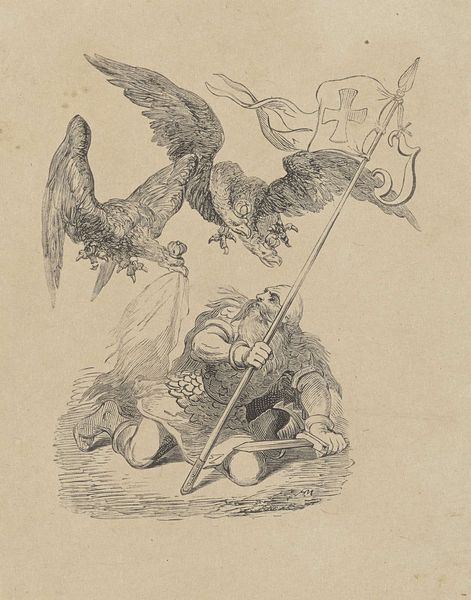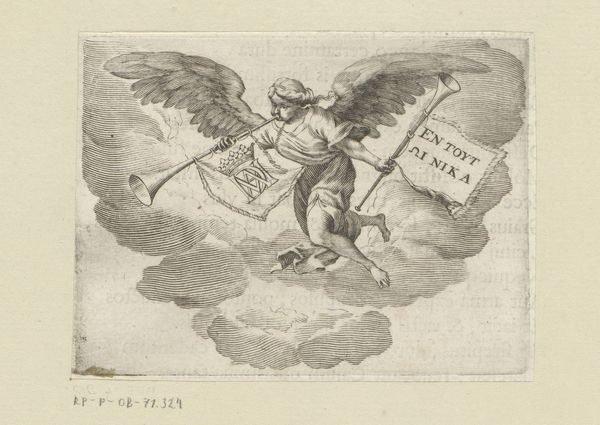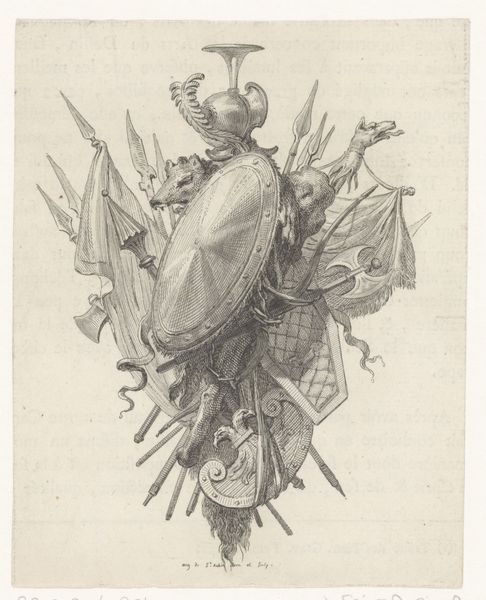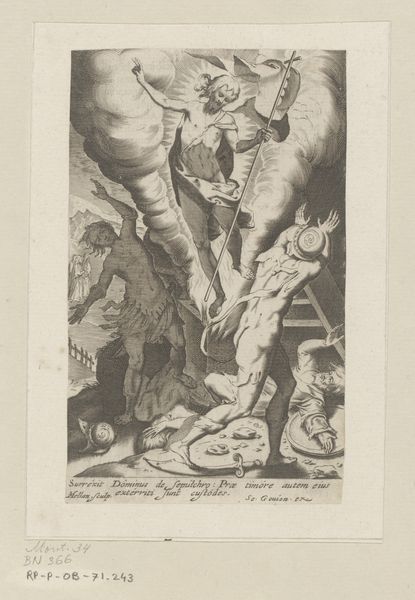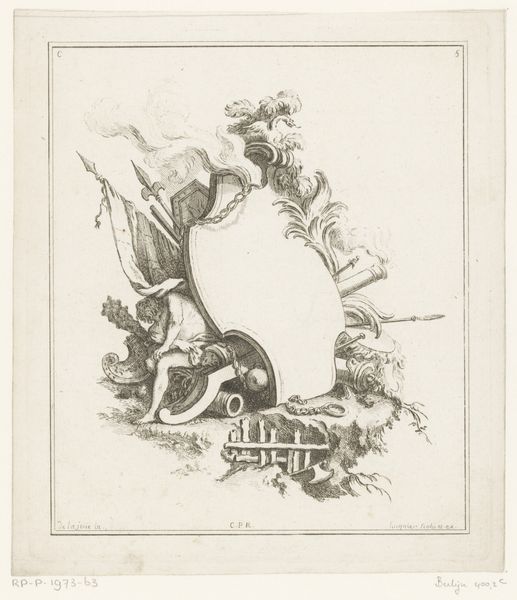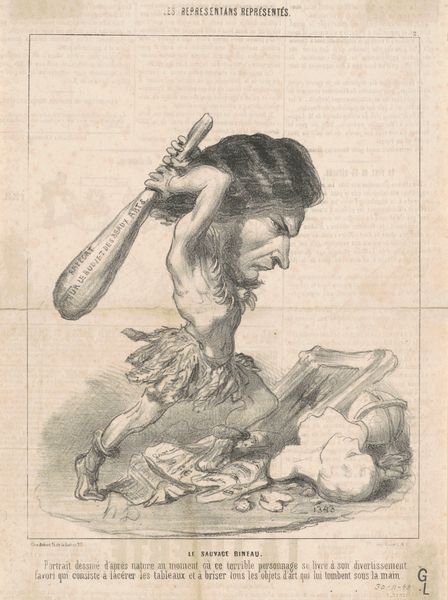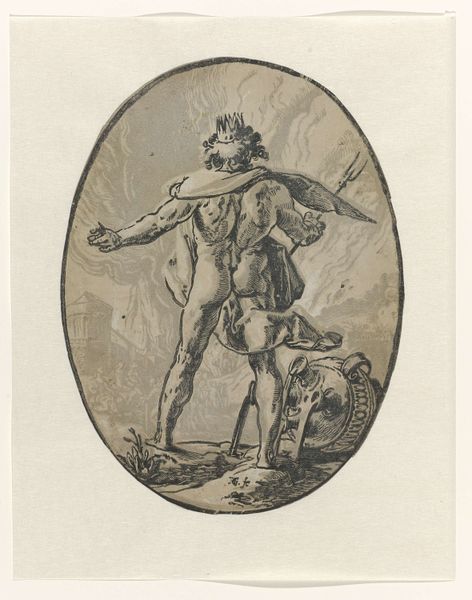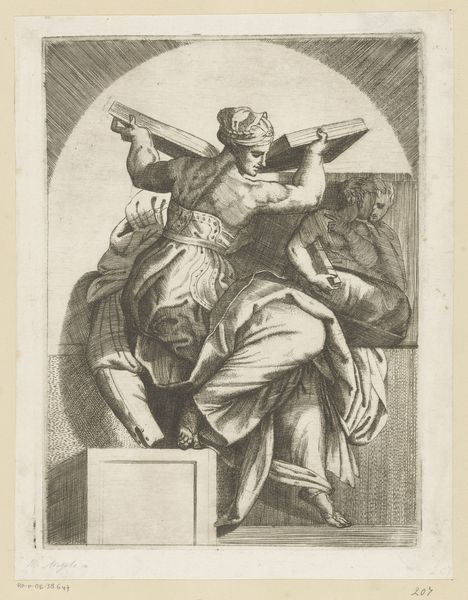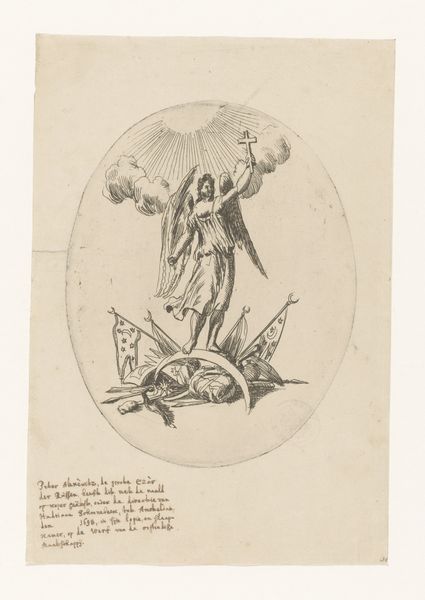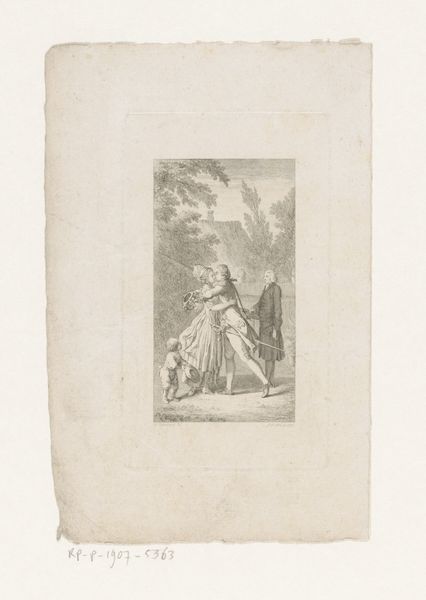
Vader Tijd pakt vluchtende mensen op en stopt ze in een mand Possibly 1864 - 1866
0:00
0:00
alexanderverhuell
Rijksmuseum
Dimensions: height 513 mm, width 344 mm
Copyright: Rijks Museum: Open Domain
Curator: Alexander Ver Huell, a Dutch artist, possibly created this drawing, rendered in ink on paper, between 1864 and 1866. The artwork is titled "Vader Tijd pakt vluchtende mensen op en stopt ze in een mand," which translates to "Father Time picks up fleeing people and puts them in a basket." Editor: The initial impact is haunting, yet thought-provoking. It feels like a visual elegy—a somber landscape dotted with potent symbols, rendered in the stark contrasts of ink on paper. There's something incredibly compelling about the central figure's burdened posture. Curator: Indeed. We see Father Time, depicted as an angel with large wings, bent over, carrying a basket on his back filled with fleeing figures. The basket bears the inscription "Het Verleden," which means "The Past" in Dutch. Consider the implications: Time burdened by history, by those who try to escape it. The romantic ideals about history, combined with allegory, become a vehicle for speaking about social topics and human life. Editor: And those fleeing figures themselves—notice how Ver Huell renders them almost indistinguishable, a mass of desperation. It's the very act of fleeing, the collective anxiety, that becomes the subject. Even more, look how on the left, death in disguise of the classic character appears to watch the drama unfolding, while a pile of belongings left behind speaks volumes on the implications of power and privilege. Curator: Note the precise lines achieved through the artist’s drawing. What I find compelling here is the contrast between the allegorical subject and the practical realities that were shaping 19th-century Europe: industrialization, migration, urbanization, all uprooting and displacing communities. How can we assess it as the commentary of material forces, rather than isolated aesthetics? Editor: The overall composition suggests the cyclical nature of history, repeating the traumas across generations, thus enriching the symbolist depth in Ver Huell’s statement. It is the power of the archetype, of inherited anxieties manifested on paper. Curator: Ver Huell seems to highlight how humans grapple with larger concepts through physical production: drawing, writing, and crafting these kinds of narrative statements that in its symbolic display are open to public engagement, shifting social dynamics through something we could even consider public art. Editor: So, perhaps what we're left with isn't simply a morbid scene but rather an illustration prompting us to actively engage with the weight of our past, and in doing so, free ourselves of certain burdens. Curator: An incisive remark; it is a striking commentary on our relationship with the past, made evident through a delicate use of materials.
Comments
No comments
Be the first to comment and join the conversation on the ultimate creative platform.
